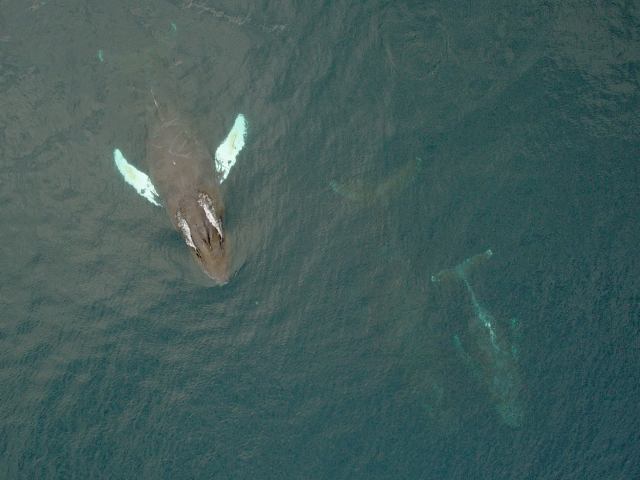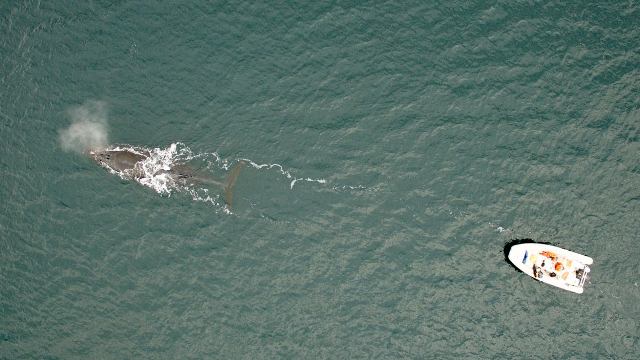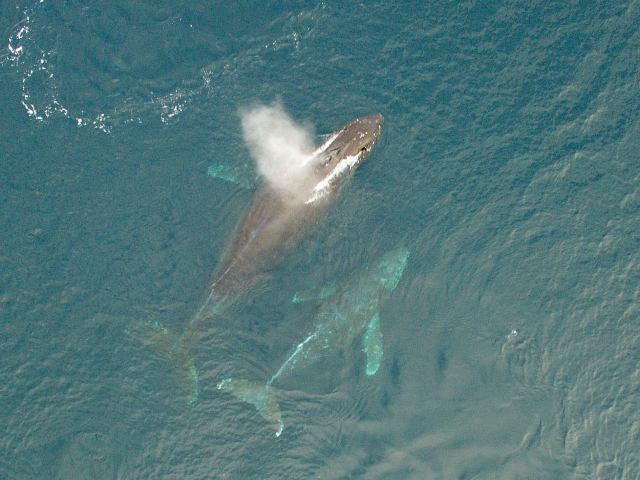This year on Bering Island marine navigation for state institutions finished on November 15, 2016. During the end of October and beginning of November the scientific department of the Commander Islands nature and Biosphere Reserve was waiting for favorable weather conditions to go to the marine trip. And finally on November 6 three men in a boat (to say nothing of the quadrotor) left to make marine mammals and bird count as part of Ecological Monitoring Program.
It was cloudy, but for us, on the Commander Islands, absence of wind is far more important than sunny weather. That is why November 6 was a good option, as the wind was light. The crew consisted of Evgeny Mamaev, Deputy Director for Science, Ivan Rybakov, Researcher and Map-maker, and Anastasiia Kuznetsova, Director of the Commander Islands Nature and Biosphere Reserve. Ivan Rybakov had an unusual backpack with an air drone (UAV, quadrotor) in it.
Ivan Rybakov catches the quadrotor during its landing. Photo by Evgeny Mamaev
The scientists managed to reach the middle of Bering Island. On their way to the monitoring point, they saw one Minke whale, which is sometimes called a whale of the bay, as it usually feeds near the coastline. After a short photo session the vehicle turned towards the continental slope (conventional border, which encircles the Commander Islands. Along this border the sea depth increases from 100 meters to 1000 meters and more), where they made a count of humpback whales and orca whales. 15 humpback whales were met, but only 10 of them were caught on video or photo. The backpack came in handy, as there was a quadrotor with camera, tablet PC, controls and a huge number of various batteries.

Photo made with our quadrotor. Three humpback whales can easily be spotted. Photo by Ivan Rybakov
It is rather easy to launch a quadrotor from a flat stable surface. However, to launch the device from a boat, which is flat but not at all stable, is a hard task. Imagine how hard it is to land it back on boat and not straight in the ocean. Fortunately, our scientists succeeded not without the help of the sea, which was not too choppy that day.
Video and photos are very useful for scientists, as they give us the possibility to see whales – as well as other objects - moving under water, which is a big advantage in comparison with onboard monitoring, when you see only the “tip of the iceberg”. Moreover, drones can fly rather far away – hundreds of meters – so it can approach whales really close, if not try to land on whale’s back.

Scientists follow a humpback whale. Photo by Ivan Rybakov
Another challenge is to approach a whale on boat and not to frighten it. During the monitoring scientists met a group of 17 orca whales. They managed to catch it on video with quadrotor and come close to take pictures from the boat. Later the crew headed to Nikolskoye rural area, but had a chance to count anseriformes bird species on Toporkov Island. 40 emperor geese were found there.
Two fountains – two male orcas. Photo by Evgeny Mamaev
Female orcas. Photo by Evgeny Mamaev
However, it was evident that seabirds had already left the marine area of the Reserve. Only several fulmars, tufted puffins, guillemots and two short-tailed shearwaters were found.
Diving humpback whale. Photo by Evgeny Mamaev
Even if there is some hope for good weather during the coming days, it is most likely, that the sea has said goodbye to us till next year and it was the last boat trip in 2016.










